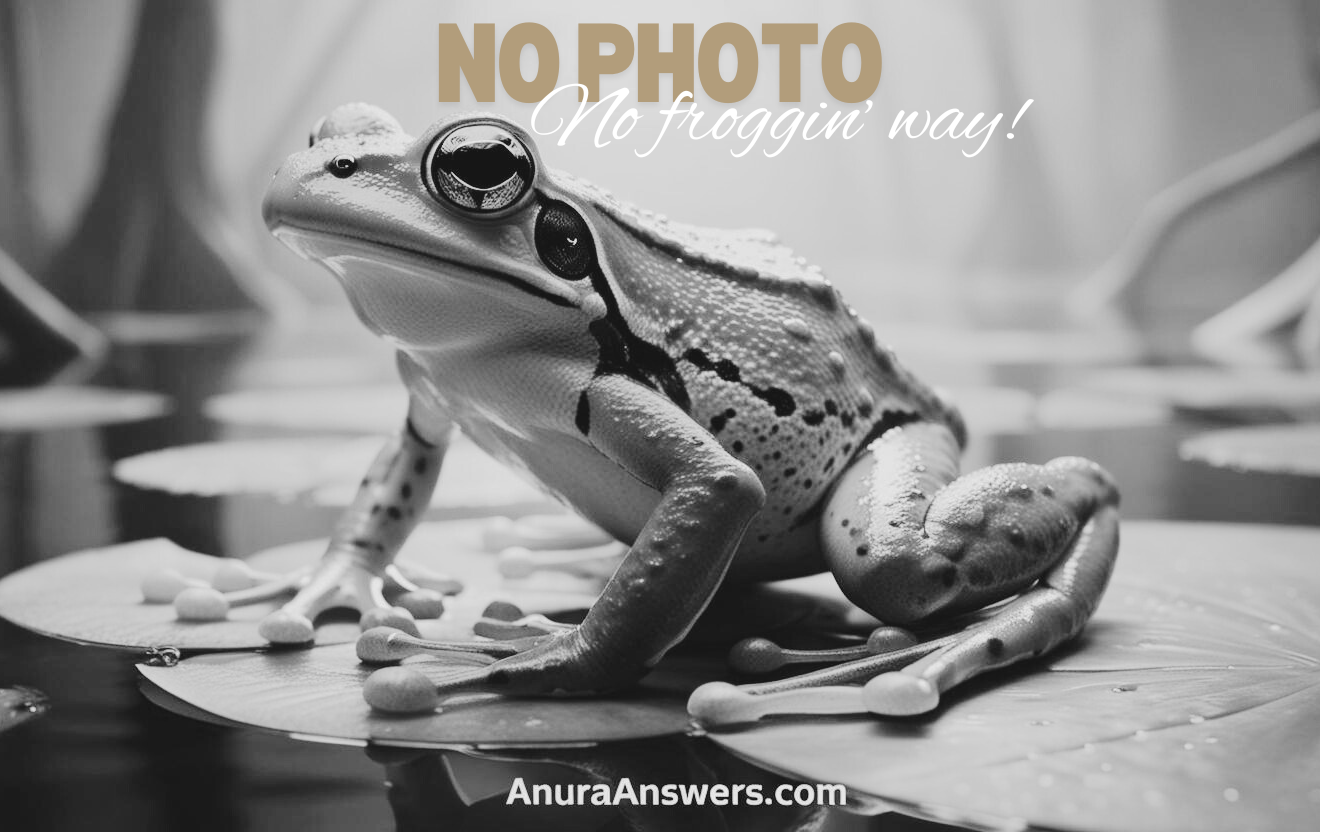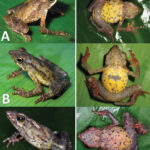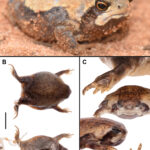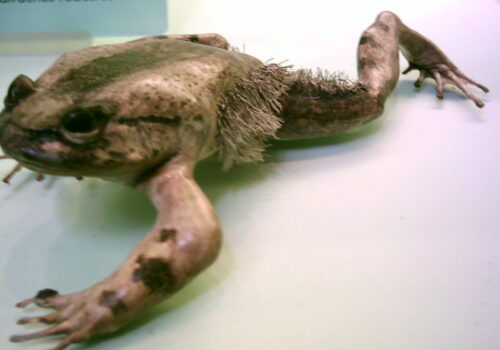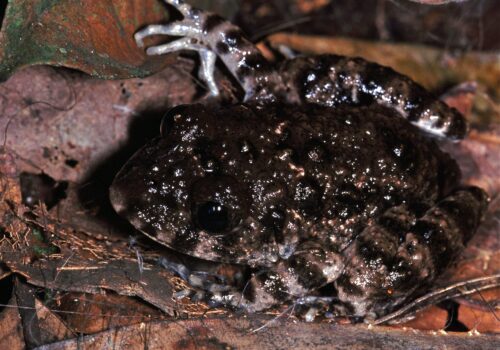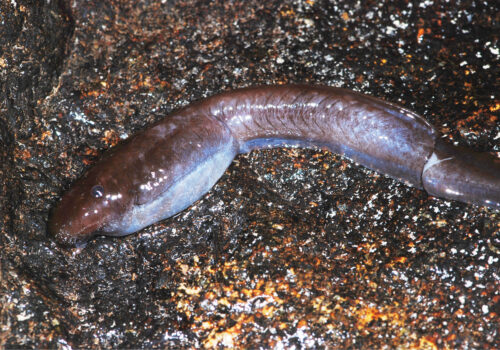The Mysterious Life of Mannophryne speeri: Trinidad’s Jewel of the Forest Floor#
Deep within the lush, moisture-rich forests of Trinidad, quietly tucked away beneath fallen leaves and gently babbling streams, lives a small amphibian whose very existence represents a delicate balance between biodiversity and environmental harmony. This elusive forest dweller is known scientifically as Mannophryne speeri, a species uniquely adapted to the rich ecosystem it inhabits. Wonderfully understated yet intricately fascinating, this diminutive frog speaks volumes about the health of its habitat, serving as an ecological sentinel in tropical environments.
A fascinating trait of the Mannophryne speeri that captures the imagination of conservationists and nature enthusiasts alike is its uncommon parenting practice: unlike many frogs who leave eggs unattended, M. speeri diligently protects its offspring, fostering tadpole survival in remarkable ways. Such traits unveil a captivating narrative hidden beneath the forest canopy.
Taxonomy and Classification#
Mannophryne speeri belongs to the family Aromobatidae, a captivating group of small terrestrial frogs well-known for their unique survival strategies and vividly patterned skins. Within Aromobatidae, the genus Mannophryne is notable for its distinctive breeding behavior and intriguing physiological adaptations.
While many may be more familiar with the brightly colored dendrobatid poison dart frogs, the aromobatids—with their subtler hues and intriguing lifestyles—equally demand attention. The specificity of M. speeri‘s taxonomy reveals its close relations within the genus; related species such as Mannophryne trinitatis highlight a fascinating evolutionary divergence, marked by subtle ecological niches and geographic separation.
Natural Habitat#
Mannophryne speeri makes its home exclusively on the idyllic island of Trinidad, a Caribbean landmass celebrated for its unparalleled biodiversity. Trinidad’s northern mountain range, cloaked in vibrant tropical forests, steep ravines, and perennial freshwater streams, provides an ideal habitat for these elusive frogs. Within this ecosystem, M. speeri occupies a specialized niche, favoring moist leaf litter near clear-running streams, small cascading waterfalls, and sequestered pools.
This cryptic creature has perfectly adapted to live and breed in shaded microhabitats, hidden beneath rocks, fallen branches, and dense vegetation. The humus-rich environment provides not just shelter, but also an abundance of small insects and invertebrates upon which it feeds. The ecological harmony of its habitat is striking—a forest symphony of sunlight filtered through the canopy, droplets gently splashing on foliage, and frogs harmoniously blending into the tapestry of colors and textures of their woodland realm.
Physical Characteristics#
The Mannophryne speeri frog is a delicate creature, rarely exceeding an inch in length. At first glance, it might appear plain, yet a closer inspection reveals subtle elegance and adaptation. Its delicate skin is shaded predominantly in earthy tones—olive greens, browns, and subtle grays—that blend seamlessly with the forest floor, allowing it to vanish effortlessly from predators’ sight.
Distinctive patterns on its limbs and back help distinguish it from close relatives. Thin, darker stripes run smoothly along its limbs, blending elegantly into its surroundings, an example of evolution’s subtle artistry. The species’ slightly granular skin texture also helps it evade detection, breaking up its shape in eyes of predators searching for an easy meal.
Moreover, its bulging yet subtle eyes grant a wide peripheral vision, critical for detecting danger and prey in a shadowy undergrowth. Calibrated to be an efficient predator, the strong hind limbs and delicate toes allow it to navigate its forest habitat with agility, from scaling slippery rocks to hopping across sun-dappled understory clearings.
Behavior and Life Cycle#
Feeding and Hunting Habits#
A dedicated predator in miniature form, Mannophryne speeri hunts small invertebrates, primarily insects such as springtails, ants, tiny beetles, and occasionally arachnids. The frog utilizes opportunistic ambush tactics coupled with swift, precise strikes. Its sharp reflexes and agile tongue movement capture prey swiftly in moist leaf litter or on stream edges.
Breeding and Parental Care#
The mating rituals of Mannophryne speeri set the species apart as a compelling subject of ecological fascination. Males typically attract their mates through soft, rhythmic vocalizations, adding subtle auditory notes to Trinidad’s woodland chorus. Upon successful courtship and mating, females deposit a clutch of eggs protected in damp leaf litter, tucked safely nearby streams.
However, the true marvel lies in the dedicated parental care these frogs display—a trait relatively scarce among amphibians. Males play an instrumental role: once the eggs hatch, tadpoles carefully wriggle onto their father’s back, secured by a specialized mucus. The male carefully transports them through a labyrinthine route, delivering them safely to quiet forest pools where the tadpoles complete their development. Such nurturing behavior underscores a fascinating evolutionary strategy aimed at maximizing offspring survival in a competitive tropical environment.
Ecological Role#
Mannophryne speeri‘s presence is far from incidental; instead, it symbolizes the ecological harmony within its fragile habitat. As an insectivore, it helps regulate insect populations, including species considered pests, contributing to maintaining the delicate ecological balance. Simultaneously, the frog itself provides essential nourishment to larger predators like birds, snakes, and larger amphibians, thus forming a vital link in the forest food chain.
Moreover, being susceptible to environmental disruptions, Mannophryne speeri serves as a powerful bio-indicator. Declines in populations or shifts in distribution can transmit early warning signs, hinting toward changes such as pollution, climate variability, or habitat alteration. Protecting these small frogs, therefore, translates into an effort of safeguarding overall environmental health.
Threats and Conservation Status#
Despite their ecological importance, Mannophryne speeri frogs face several pressing threats that imperil their future. Habitat loss constitutes a primary concern: agricultural expansion, logging practices, urban encroachment, and pollution disrupt the intricate ecosystem of northern Trinidad. Deforestation fragments their crucial habitats, isolating populations, reducing genetic flow, and increasing vulnerability to stochastic events.
Climate change further exacerbates vulnerability, altering rainfall patterns and temperature ranges—changes that could severely impact breeding cycles, tadpole survival, and prey availability. Although comprehensive population assessments remain sparse, conservationists are increasingly calling attention to this species, recognizing its vulnerability and ecological significance.
Currently, the IUCN categorizes Mannophryne speeri as “Endangered,” prompting urgent conservation action aimed at safeguarding its limited habitat. Sustainable land management, habitat restoration, additional research, and community education programs stand crucial in securing the future of this treasured species.
Cultural and Scientific Significance#
While seemingly small in comparison to Trinidad’s charismatic wildlife—such as monkeys and exotic birds—Mannophryne speeri captures the imagination of biologists and naturalists. In local culture, frogs often symbolize fertility, renewal, or ecological health, reflecting a harmonious relationship between humans and nature.
Even within scientific circles, these tiny frogs have sparked interest for studies in evolutionary biology, adaptive behaviors, and as bioindicators for environmental monitoring. Their meticulous parenting strategies and life-cycle stages offer valuable ecological insights, facilitate environmental research, and help shape conservation policy, highlighting the tight interconnectedness between humans and our environment.
Conclusion#
The unassuming yet charismatic Mannophryne speeri continues to quietly safeguard the ecological heartbeat of Trinidad’s exquisite island forests. Its remarkable parental behaviors, adaptive physiology, and committed ecological roles remind us compellingly that conservation efforts must not overlook the less charismatic, less visible, yet equally critical species among our ecosystems.
By protecting these gentle, silent residents, we uphold the legacy and ecological integrity of the landscapes they embody. Mannophryne speeri, with its intricate life habits and unique evolutionary adaptations, serves as a potent reminder of how the most diminutive organisms profoundly affect ecological balance.
Join the ongoing journey of discovery and protection; lend your voice to conservation efforts, support habitat restoration, and let the enchanting story of the Mannophryne speeri continue thriving for generations still to come.
